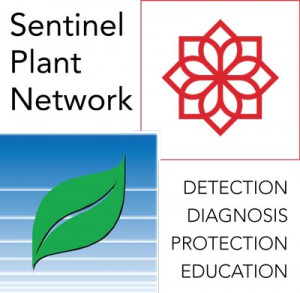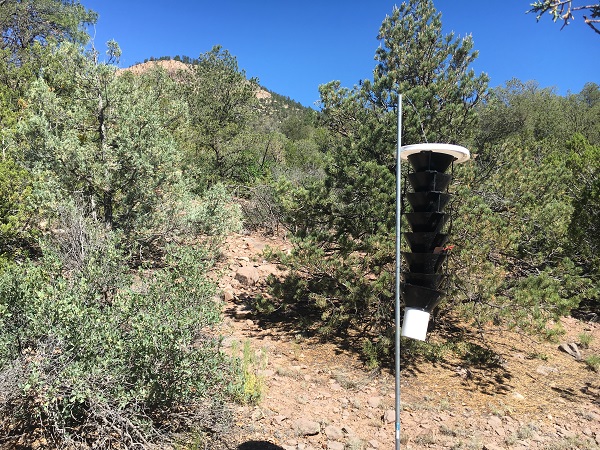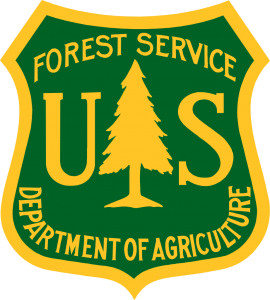 April 24, 2017
April 24, 2017
The USDA Forest Service, Forest Health Protection in coordination with the Santa Fe Botanical Garden are monitoring for exotic, invasive insects that may pose a risk to the health of our urban and native forests. Santa Fe Botanical Garden is a member of the Sentinel Plant Network and committed to early detection of high-consequence plant pests and pathogens.
Each monitoring site is composed of three bark beetle funnel traps. The traps are baited either with host tree volatiles or a bark beetle pheromone to attract various bark beetle and wood-boring insect species.

Photo courtesy of Tom W. Coleman, Ph.D. USDA Forest Service
There will be three traps in the Santa Fe Botanical Garden and they will be checked approximately every three weeks until early September.
There will be two sets of lures to bring in ambrosia beetles and bark beetles/wood borers attracted to pine volatiles. The third lure is fairly specific to Euwallacea ambrosia beetles. These beetles are a new threat to hardwood species in southern California.
Traps will also be established at the Albuquerque Botanical Garden and several of the traps will be located in the National Forests in New Mexico. Urban forest health surveys are also being conducted in coordination with the trapping work in Taos, Santa Fe, Albuquerque, and Las Cruces. The Urban Forest Surveys are the main focus of this larger project.
The goals of the project are:
- Detect, delimit and monitor newly introduced exotic bark and ambrosia beetles at selected high-risk forest areas
- Quickly assess and respond to newly detected infestations



